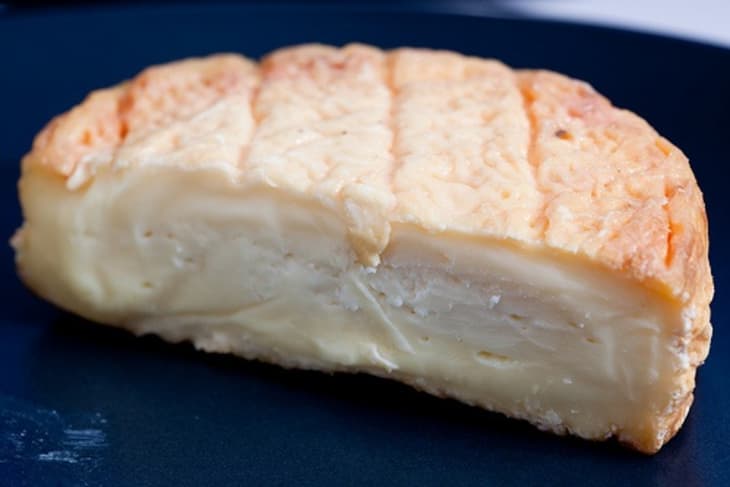Stinky! A Profile of Washed Rind Cheeses The Cheesemonger
They’re the stinkiest of any cheese you’ll find behind the counter. They’re the ones that make you search your refrigerator for something that’s gone bad. In this week’s Cheesemonger column, a profile on the washed rind family of cheeses: how to pick them out, some of the best even for the non-converts, and understanding the difference between a bad stink and a good one.
A brief background:
Washed rind cheeses are bathed in some kind of liquid solution– normally a saltwater brine– during their aging process. Hence the term, “washed.” The practice originated in the middle ages, in monasteries, where there was plenty of wine, beer, and spirits available from those artisan monks who busied themselves with their making. Washing the outside of a cheese not only protected the interior paste by preventing the rind from cracking, but it also produced, they found, cheese with a meaty, more pungent flavor that was a surprisingly welcome replacement for meat during periods of religious fasting.
Washing in a brine or booze solution cultivates the growth of brevibacterium linens (or b-linens), bacteria unique to washed rinds, thereby resulting in less acidic cheese with a pronounced pungency. The bacteria itself is smelly, which explains, in short, why the cheese becomes so, as well. It’s also a pinkish-orangish tone, so all washed rind cheeses have a rind that falls in that color spectrum.
How to pick out a washed rind cheese:
Washed rind cheeses should look moist, but not slick or too sticky. There should be a slightly tacky texture to the rind. Cracking of the rind is probably indication of a very ripe cheese if the interior is oozing from the cracks, in which case it may be perfectly fine (but should be eaten quickly). If there is light brown or pinkish discoloration of the rind or interior paste,or if the rind looks as if it’s cracked from being too dry, the cheese is probably just old. The interior should be soft and supple, or with some varieties, oozing and unctuous.
Some of our favorite varieties:
These cheeses are relatively easy to find:
- Taleggio- pasteurized cow, Lombardy, Italy
- Epoisses- pasteurized cow, Burgundy, France
- Ardrahan- pasteurized cow, County Cork, Ireland
- Meadow Creek Dairy, Grayson– raw cow, Galax, Virginia
- Haystack Mountain Dairy, Red Cloud– raw goat, Niwat, Colorado
- Cowgirl Creamery, Red Hawk- Pt. Reyes Station, California
How do you tell a good-bad smell from a bad-bad smell?
Don’t be frightened off by the stink of a washed rind. Especially if you don’t have much experience with them, know that their bark is always louder than their bite. At best, a washed rind cheese will have a fermented, fruity, pleasantly funky quality, with such richness and creaminess that it may actually come off as sweet. Watch out for ammonia or Windexy smells, which signal that your cheese may be past its prime. Listen to your instincts! If the cheese smells just plain rotten, it probably is.
A note on the rind
Washed rinds may have a bit of crunch or a sandy quality in their rind, which indicates the presence of residual salt crystals left behind from their washings. Whether or not to eat the rind is a matter of personal choice. Sometimes it will enhance your experience of the cheese, and other times it may taste bitter or off. If that bitterness has made its way to the paste, it’s definitely gone bad, so just toss it.
Image: Flickr user Matt Biddulph licensed under Creative Commons.
